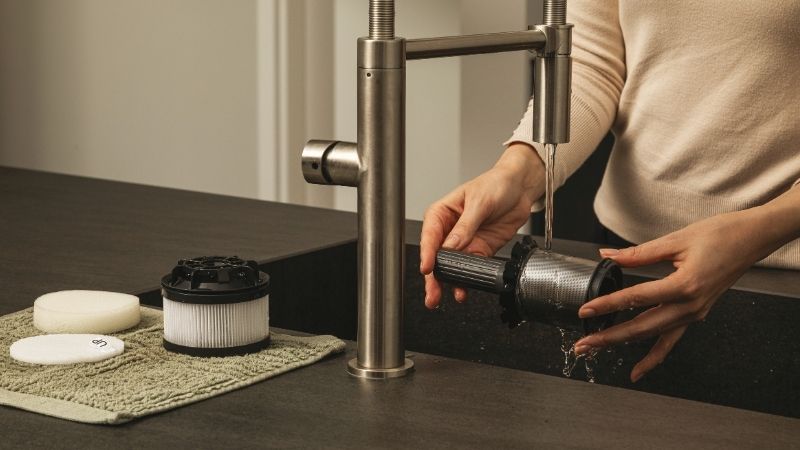Deciding what temperature your fridge should be is an important consideration, not only does it help to maintain the quality of cold-stored food, but also reduce your impact on the environment and save on energy bills. The setting you choose, however, depends upon several factors. This guide will help you determine the ideal temperature of a fridge as well as the signs that your fridge is the wrong temperature and how to fix the issue.
The best fridge temperature for food storage
According to the UK Food Standards Agency, domestic fridges should be set at 5 degrees Celsius or below, with the best temperature for a fridge between 3°C and 5°C. Any higher than this and you risk the growth of harmful bacteria which thrive between 8 degrees and 63 degrees Celsius.
Less than 3 degrees Celsius, however, and you risk spoiling fresh food which could freeze in the coldest parts of your fridge.
How to monitor your fridge’s temperature
If your fridge is not fitted with a temperature display, the best way to take its temperature is with a thermometer. For the most accurate reading, place the thermometer in a glass of water and leave it on the middle shelf of your fridge overnight. Check the temperature the following morning, the first time you open the door, and make any temperature adjustments with the interior dial.
Note: Fridge temperature adjustments take 24 hours to take effect.
Signs that your fridge the wrong temperature
- Here are some indicators that your refrigerator is outside of its ideal temperature range: Food feels warm when removed from the fridge
- Food freezes in the fridge; this can happen particularly when food is placed at the top or back of the appliance.
- Condensation forms on the walls of the fridge.
- Ice forms at the back of your fridge
- Food goes off before its expiry date
Good habits to keep your fridge at the right temperature
- Keep your fridge door closed when not in use. The interaction between warm air from the outside and the cold air of the fridge causes frost and an eventual build-up of ice at the back of the fridge. To prevent this, make sure the fridge door is kept closed and the appliance seals are in good condition.
- Avoid putting hot food in the fridge. Again, this causes frost and so to avoid this problem cool hot food completely before it goes into the fridge.
- Avoid overloading your fridge with too many items. To have a well-functioning cooling system, it is vital that you leave room for air to circulate. Overfilling your fridge prevents this circulation meaning that temperatures in your fridge will vary, risking the cultivation of harmful bacteria.
Hoover fridges | Cooling technology explained
As a leader in domestic appliances, Hoover refrigerators come with next-generation cooling technology to keep your food fresher for longer and reduce energy consumption. Here is a quick guide to some of Hoover’s latest fridge technology for your next purchasing decision.
FROST FREE Refrigerators:
This state-of-the-art cooling technology uses a system of ventilation and evaporation to prevent the formation of ice in the interior and eliminate the need for defrosting. In addition, better air distribution means cooling is more evenly spread, keeping food fresher for longer.
CHILLER ZONE:
Hoover’s chiller zone is a fridge compartment maintained at a lower temperature. It is perfect for storing food at higher risk of bacteria such as meat and fish.
SKY LED LIGHTING:
Hoover’s LED lighting provides first-rate visibility throughout the fridge cavity. In addition, LED lights last longer and consume 15 times less electricity than standard bulbs.
The best fridge temperature is between three and five degrees Celsius. Maintaining this temperature is important for the proper preservation of food; protecting you and your family from harmful bacteria. Hoover’s range of stylish, next-generation refrigerators are suitable for all budgets and offer the latest in food preservation and energy-saving technology.



